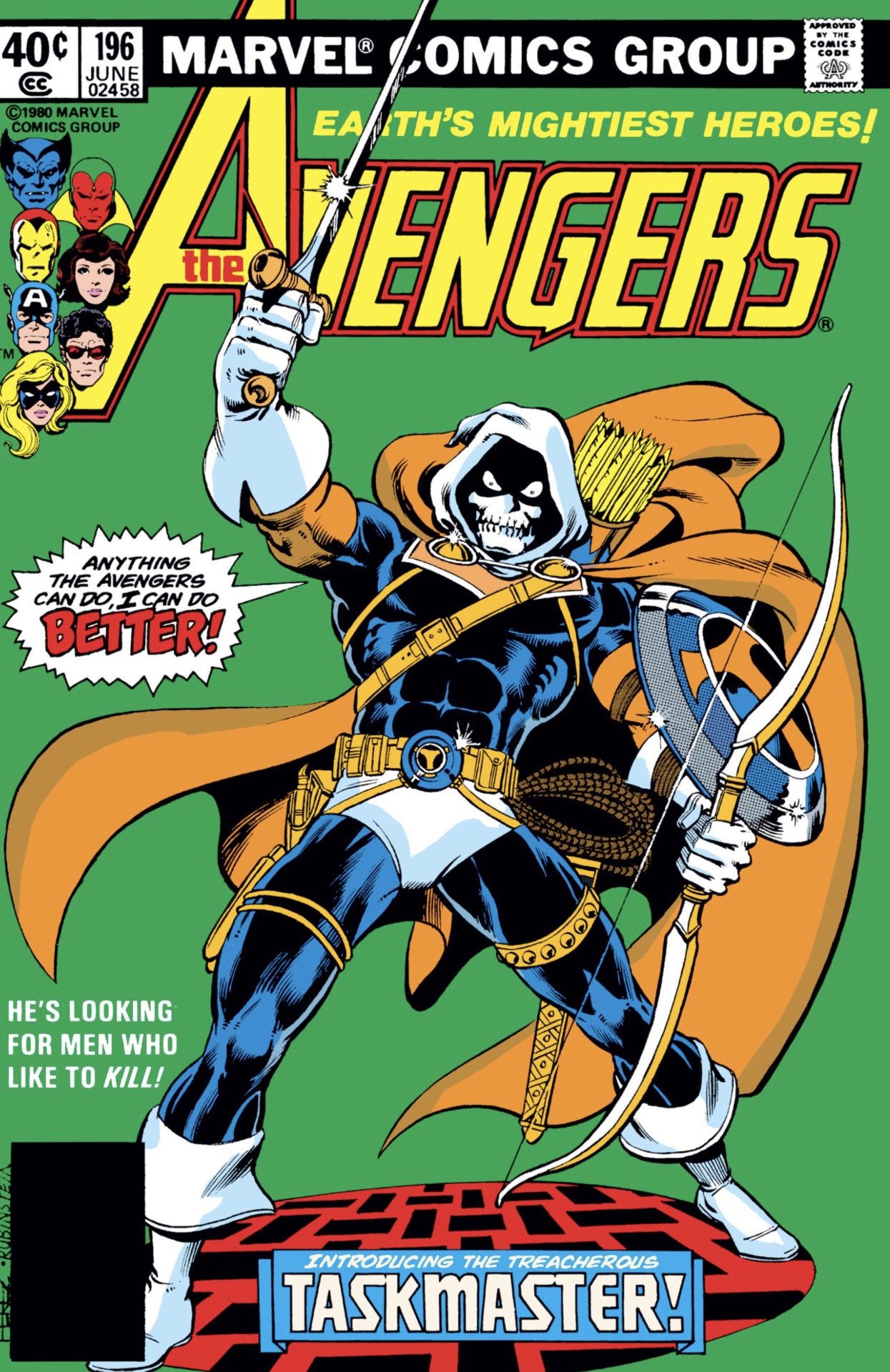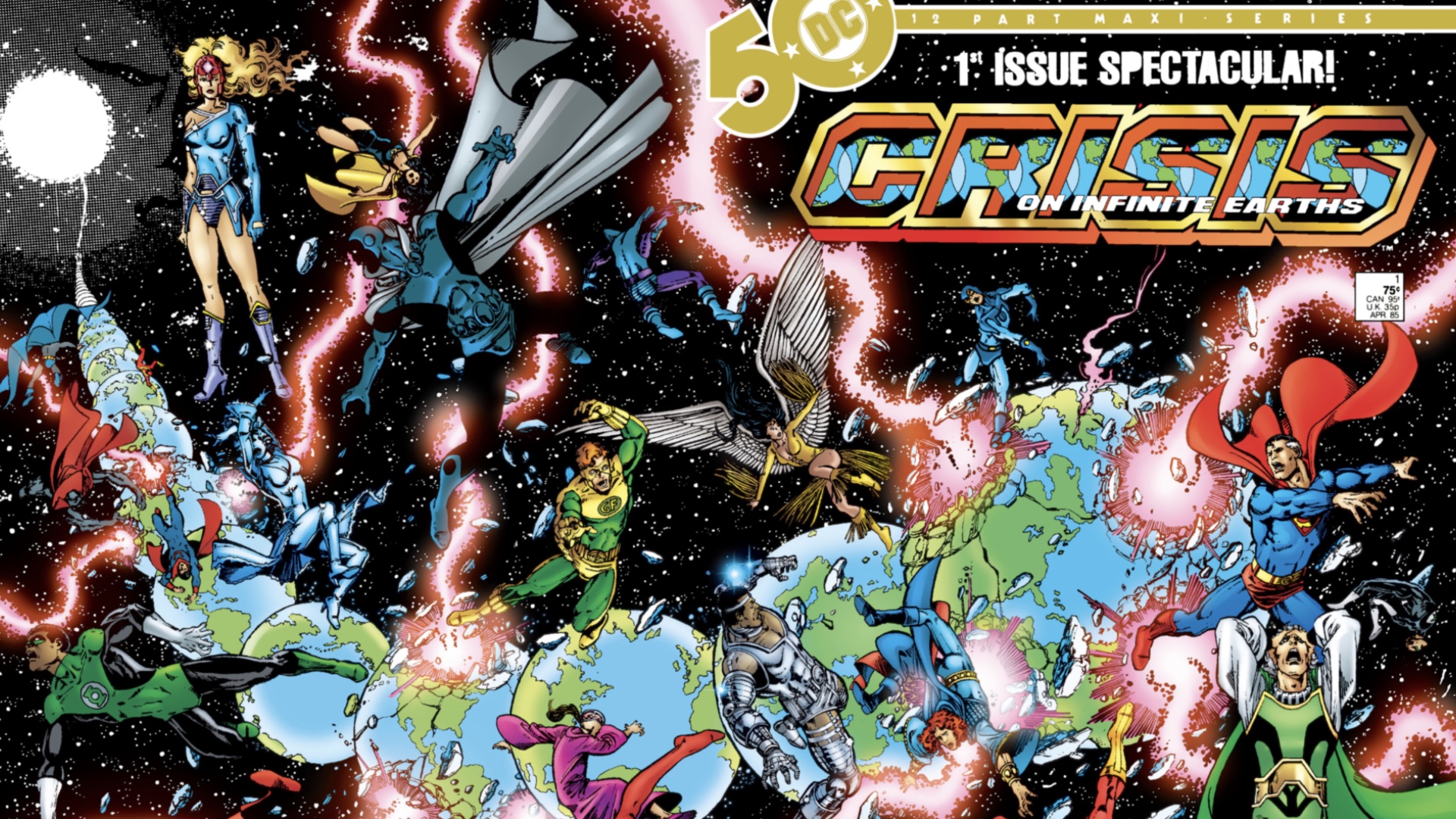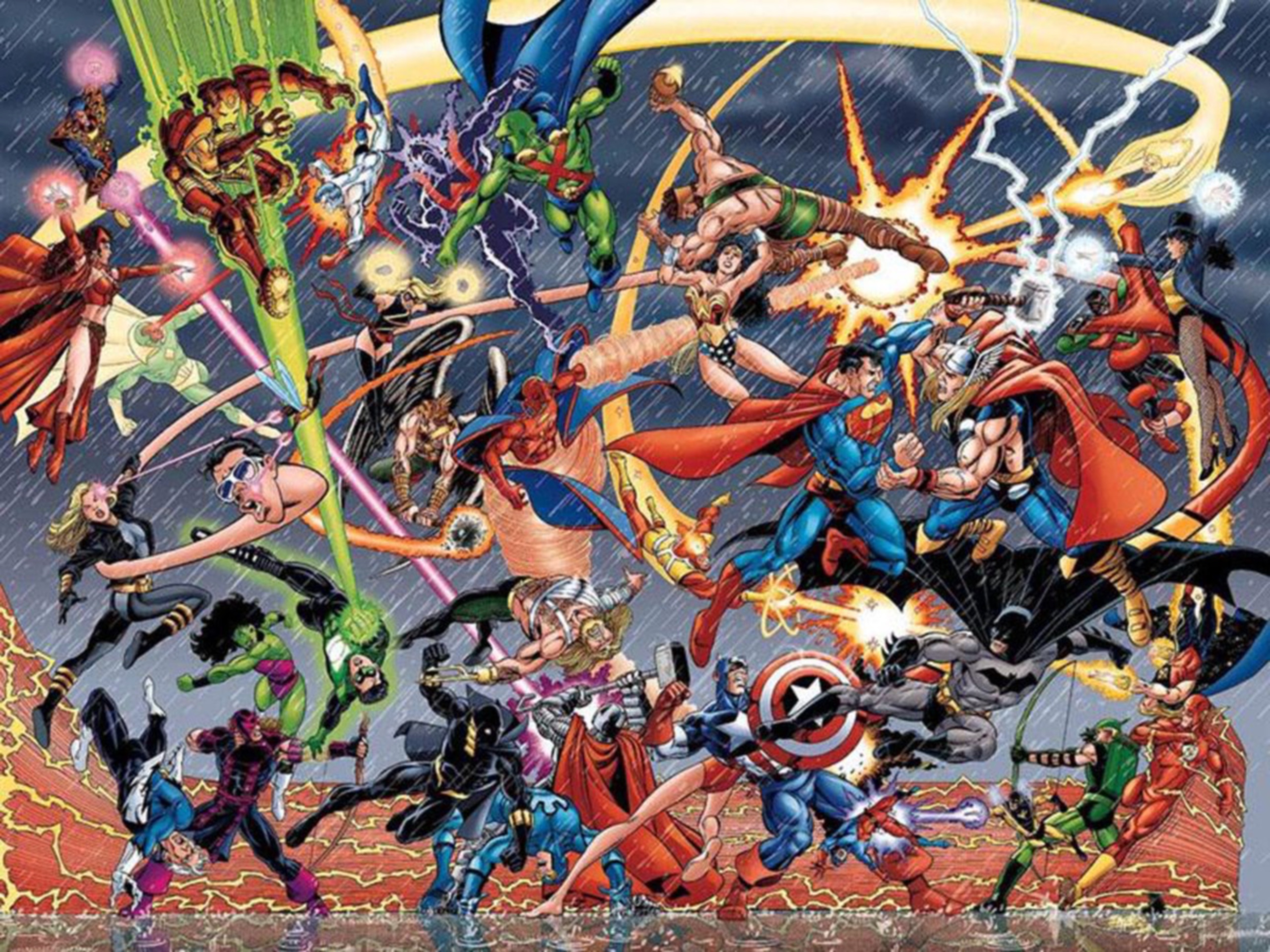George Pérez is the definitive DC and Marvel superhero artist
George Pérez drew almost the entire Marvel and DC universes - and made an indelible impact on the industry in the process

If superhero comic art is a language unto itself, the work of legendary George Pérez is its Rosetta Stone.
The principles of superhero comic art were developed by dozens of people, and have been filtered through the sensibilities of countless creators in the decades since Superman introduced the genre in 1938. But the art of George Pérez serves as a perfect guide stone to understanding both the roots of superhero comic book art and the modern sensibilities of the genre.
Pérez, who died on May 6, 2022, was known among fans for his hyper-detailed, endlessly engaging work on such landmark stories as Crisis on Infinite Earths, Infinity Gauntlet, and JLA/Avengers (to name just a few of his greatest hits). And among his peers, he was known for his almost mind-boggling mastery of storytelling and design that has often been imitated but rarely duplicated.

In late 2021, Pérez publicly disclosed that he has been diagnosed with a terminal illness, with a prognosis of only months to live. In the wake of his announcement, nearly the entire comic book industry came together to celebrate Pérez's art, and more importantly the man himself - whose openness, friendly appeal, and presence in the community were as ubiquitous as his beloved work. And Pérez himself responded in kind, thanking the comic book industry and his fans for their show of support and opening up about his life and career.
For all of this - the industry outpouring of unconditional support and recognition of his timeless influence, and so much more - George Pérez is the most definitive superhero artist of all time; the perfect distillation of the fundamentals laid out by his forebears, and an endless trove of innovation that informs modern artists to this day.
George Pérez was a master of storytelling

George Pérez first hit the comic scene in 1974 at the ripe old age of 20, with artistic sensibilities far beyond his years. After a short run on Marvel's Deadly Hands of Kung Fu title in which he co-created White Tiger (his first of many superhero costume designs, which we'll get into later), he quickly graduated to Marvel's then-flagship title The Avengers, solidifying his place as one of the publisher's early rising stars.
Immediately, Pérez's art stood out from his peers. While his contemporary rising stars such as Jim Starlin and John Byrne were developing styles of their own that echoed the esoteric, anti-nostalgic tenor of mid-'70s pop culture through the lens of hyper-realistic predecessors such as Neal Adams and Jim Steranko, Pérez rolled the clock back just slightly.
Comic deals, prizes and latest news
Get the best comic news, insights, opinions, analysis and more!
Striking an eye-catching balance between the jam-packed linework of the era's prevailing sensibilities and the more open, unflinching art of Jack Kirby and Steve Ditko (the earliest Marvel superstar artists), Pérez deftly bridged the artistic generation gap, offering up a roadmap for similarly-minded superhero artists to this day.

Like Kirby, who is considered the godfather of modern superhero art and who essentially wrote many of the stylistic 'rules' of the genre, Pérez developed a storytelling style where every page counts, and in which every panel is a crucial beat in the plot at hand. But Pérez's version of these principles goes almost the opposite direction of the essential simplicity of Kirby's original 'rules.'
Jack Kirby's art follows several structural rules (which helped him stay on track to pencil roughly a million full comics every month for decades), most relevant in this case is his standard of using a maximum of six panels per page to minimize the work needed to tell a story while maximizing the impact of every panel in a sequence.
Meanwhile, George Pérez almost fully reversed these rules of minimalism in many of his most iconic pages, stacking in numerous panels each packed with detail - but, in keeping with Kirby's principles, each panel makes an indelible impact on the story being told.
Case in point, this popular page from JLA/Avengers made the rounds on Twitter in the wake of Pérez's 2021 disclosure of his terminal diagnosis. The page, which depicts a fight between Batman and Captain America, is based around a few larger panels that lay out the scene and the characters at hand.

But rather than taking a straightforward approach to a dynamic fight across a smaller number of bigger panels which each show a portion of the clash, Pérez peppered the page with a cluster of smaller panels dialing in closely on the blows that each hero is deftly delivering, countering, and parrying - illustrating the subtle battle of strategic wits that's taking place between Batman and Captain America as they size each other up, neither fully committing to the fight until their mutual motivations can be determined.
Many modern artists use large numbers of panels, and it's a favorite tactic of some writers to script smaller, repeating panels to frame moments that involve numerous characters. And it's inarguable that Pérez's penchant for this kind of expanded page structure has influenced that trend.
But what illustrates Pérez's mastery of comic storytelling and his ability to break rules he clearly fully understood is that no matter how many panels or images he managed to include on a page, each one guides the reader and pulls them more deeply into the moments of the story, like the sequential frames of a great film.
George Pérez was a master of design

Pérez's appeal goes far beyond his staggering storytelling techniques, which are most mechanically apparent to artists learning from and being inspired by Pérez's art. Along with being a so-called 'artist's artist,' he was a fan-favorite creator almost since he turned in his first pages.
During his early landmark runs on Fantastic Four and especially Avengers, for which he illustrated over 20 issues including part of the legendary 'Korvac Saga' story, Pérez quickly put his personal touches on the Marvel Universe of the era.
From his definitive take on Hank McCoy's furry blue Beast form during his time on the Avengers to his so-bonkers-it-actually-works costume design for Beast's best bud Wonder Man, Pérez became one of the most iconic Avengers artists of all time right out of the gate - a role he'd continue to step into over the decades.
That connection to the Avengers is emblematic of one of Pérez's most appealing qualities as an artist: his unique eye for character design and 'acting,' the way the characters display the emotions and humanity they're meant to embody in the story.

Wide-eyed, expressive, and emotional, Pérez's characters eschew the grittiness that became a prominent aspect of superhero art alongside the rise of his career for an inviting, clean-lined style that embraces the larger-than-life nature of superheroes as a platform for more mature stories.
And it's not just the emotion, acting, and the dynamic physical action of Pérez's characters that makes anything he drew stand out as both uniquely his, and universally recognizable - it was his singular eye for costume design and rendering.
While many artists have leaned further and further toward the simplicity of early superhero designs, Pérez again inverted a classic principle of superhero comics, flipping the idea of what makes an eye-grabbing, easily repeated look for a character meant to be rendered over and over on numerous pages on its head.
Prevailing standards of superhero design have often called for sleek simplicity to create a unique, instantly recognizable silhouette with details that can easily be reproduced for numerous pages and panels on end. But true to his often iconoclastic nature, Pérez took the concept of the superhero silhouette and packed it in with a level of detail that is both eccentric and impressive.
Pérez's unique approach to costume design, which often incorporated elements such as scale maille, cuffed boots, and other hallmarks of his personal taste, can be seen to great effect in characters such as Taskmaster, Deathstroke, Jericho, and of course the original Nightwing costume - disco collar and all.

The result is costumes that look both personal to the characters, and evocative of the influences Pérez brought to his art - and not just in terms of his stylistic comic book predecessors, again like Jack Kirby, whose own eye for detailed, dramatic costumes undoubtedly influenced Pérez's almost surreal style.
Pérez's designs often recall the costumes worn in the real world by dancers and performers, harkening back to Superman's earliest costume which was heavily based on the typical look for a circus strongman at the time, but filtered through the lens of his own cultural touchstones.
The more-is-more design style that Pérez pioneered became almost standard through the '90s, with characters often adding more colorful, asymmetrical, and intricate elements to their costumes throughout the decade. In the '00s, the pendulum swung back the other way, with artists again embracing a stripped-back, simplified approach to superhero design.
But Pérez's influence can still be seen directly outside of comic books, in video games and films, where superhero costume designs are often filled out with numerous details, accents, textures, and colors to give them a sense of depth and movement - qualities Pérez captured perfectly in two dimensions, thanks in part to his sense of character design.
George Pérez drew the most iconic stories in comic books

At the same time Pérez was drawing Avengers for Marvel Comics in the late '70s and early '80s, he managed to snag a simultaneous gig drawing Justice League of America for DC - making him one of the rare artists to draw both teams on their main titles, but possibly the only person to ever do both at once.
(This was of course back at a time when comic book production methods and standards were somewhat different, and pencilers such as Pérez were more easily able to create multiple titles at once - a much more unfeasible task by modern standards).
Though the overlap was brief, it solidified Pérez's reputation early on as a go-to artist for the biggest titles as well as a fan-favorite creator - to the point where Marvel and DC began planning an Avengers vs. JLA crossover with Pérez handling the art, though the project was scuttled (but not forever).
Pérez quickly transitioned to drawing DC's New Teen Titans, revamping the teen team alongside writer Marv Wolfman, and creating a crew of new characters for the roster including Cyborg, Starfire, and Raven - three of the core Teen Titans to this day.

On Teen Titans, Pérez honed his skill for rendering characters, pushing his design and layouts to new heights while staying grounded in the fundamentals that had brought him to stardom. And it's here that Pérez's title as the most definitive superhero artist of all time truly comes into focus.
Starting with DC's Crisis on Infinite Earths, which rewrote DC continuity and featured nearly every DC character ever to that point, Pérez became the artist of choice for several of the most beloved and influential comic stories ever. He also began his own career as a writer, both writing and penciling DC's subsequent Wonder Woman relaunch.
Drawing on his skill for rendering dozens upon dozens of characters, honed on Crisis on Infinite Earths, Pérez returned to Marvel shortly thereafter to draw Infinity Gauntlet, the now-legendary tale of Thanos' quest to wipe out half the life in existence.
With Crisis On Infinite Earths and Infinity Gauntlet both under his belt, Pérez had effectively drawn two of the most well-known, beloved, and genre-defining superhero stories that are influencing both DC and Marvel to this day, on the page, on-screen, and in just about every medium you can think of.

And while those stories may be the perfect examples to show just how important and impactful Pérez's work has been for both fans and creators alike, perhaps the most emblematic of all his best traits as an artist, including the skills and creative eye that always set him apart from his peers, is his subsequent late '90s, early '00s run on Avengers alongside writer Kurt Busiek.
Arriving in the wake of Marvel's 'Heroes Reborn' relaunch which recast the Avengers, Fantastic Four, and others in their own separate continuity with very, very '90s sensibilities, Busiek and Pérez's Avengers managed to roll back the clock to a much more classic take on Earth's Mightiest Heroes while also pushing them forward in the Marvel Universe with new characters, new concepts, and new stories.
In other words, Busiek and Pérez's Avengers is a perfect lens for Pérez's skill of bridging the generational gap between the genre-building artists who preceded and surrounded him and the contemporary style of any era in which he worked with the same level of skill and mass appeal.

And of course, the blockbuster success of Busiek and Pérez's Avengers among fans, critics, and creators alike led to Pérez's mainstream superhero career coming full-circle, as he and Busiek were drafted in 2003 to finally create the JLA/Avengers comic that had been waiting in the wings since the early '80s. Together they crafted what remains essentially the perfect Marvel/DC crossover comic, full of fresh ideas to bolster the feelings that come with seeing the most iconic characters and concepts from Marvel and DC coming together. And all under the pencil of the artist who, for many fans, remains the creative standard for both teams.
And of course, it's got plenty of big fan-service moments (like the aforementioned Batman vs. Captain America fight) rendered exactly as you'd always wished they would be.
JLA/Avengers has sadly been largely out of print for years but DC, Marvel, and the comic book community the Hero Initiative published a limited run of just 7,000 copies of a new edition back in March, available only directly through comic shops to honor Pérez.
So with scarcity and demand for the story at an all-time high, JLA/Avengers will remain the crowning achievement in Pérez's career of crowning achievements, and what's more, incontrovertible proof that George Pérez was and still is the most definitive superhero artist of all time.
George Pérez drew more than one of the best DC Comics stories of all time, and some of the best Marvel stories of all time too.
I've been Newsarama's resident Marvel Comics expert and general comic book historian since 2011. I've also been the on-site reporter at most major comic conventions such as Comic-Con International: San Diego, New York Comic Con, and C2E2. Outside of comic journalism, I am the artist of many weird pictures, and the guitarist of many heavy riffs. (They/Them)



